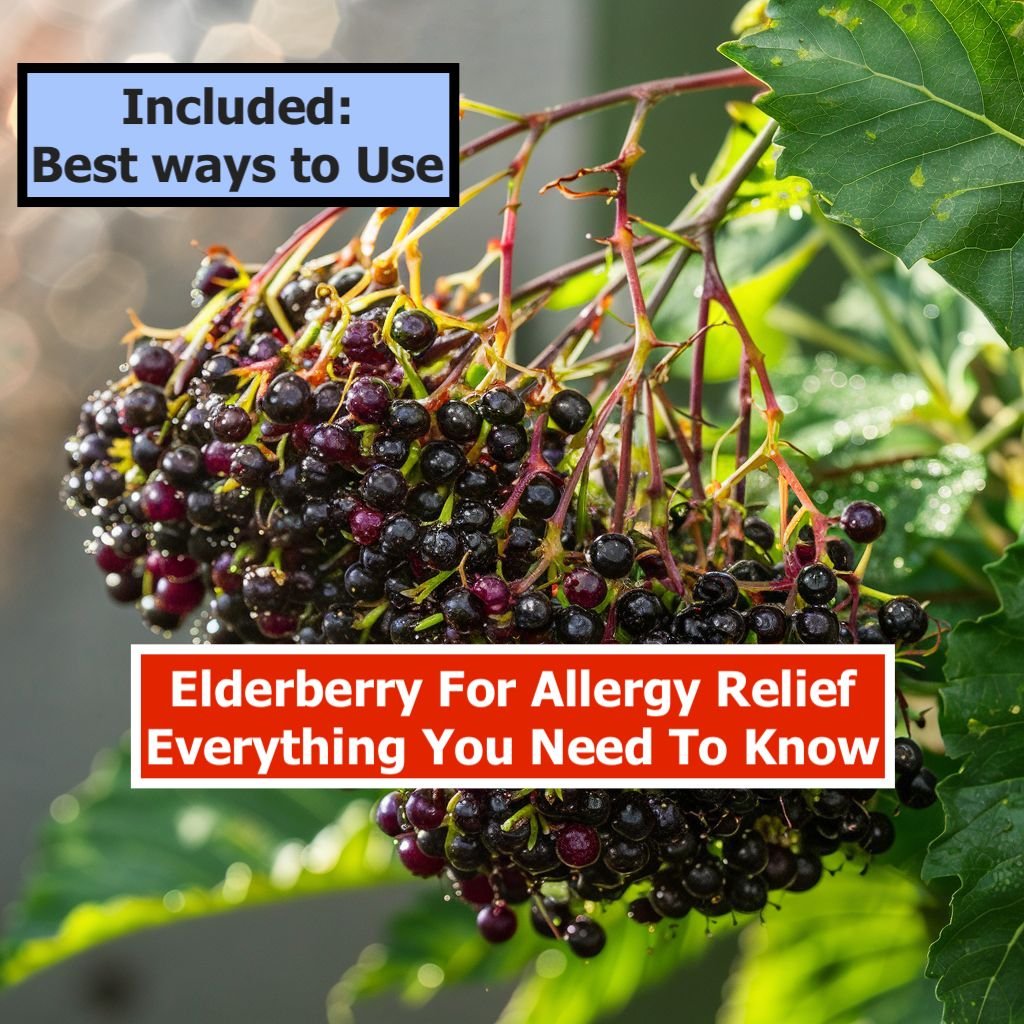If you, as an allergy sufferer, have visited Hawaii, chances are, you’ve most likely asked yourself, why are my allergies so bad in Hawaii? This usually happens after a day or two of arriving, after embracing the warm Hawaiian breeze, and probably with a drink or two by the beach, hopefully though, not coconut water. You’re not alone because Hawaii has brought a lot of memories (and sneezes) to people’s lives. Let’s find out what makes this place sniffle!
So, why are my allergies so bad in Hawaii?
Hawaii, known for its stunning landscapes, lush vegetation, and warm climate, is a paradise for many. However, the islands can present a unique set of challenges for allergy sufferers. Despite its idyllic appearance, Hawaii hosts a variety of environmental factors and allergens that can exacerbate allergy symptoms, often leaving residents and visitors wondering why their allergies are significantly worse in this seemingly pristine environment. This article delves into the reasons behind the intensity of allergic reactions in Hawaii, exploring the island’s unique ecology, common allergens, and the impact of climate change and volcanic smog (VOG) on allergies.

Why Are My Allergies So Bad in Hawaii? – Environmental Factors
Hawaii’s diverse ecosystems range from tropical rainforests to arid deserts, each with its own microclimate and corresponding flora. This diversity, while part of Hawaii’s charm, contributes to the wide array of allergens present. Moreover, the islands’ year-round growing season ensures continuous pollen production, leaving little respite for allergy sufferers.
Hawaii’s geographical isolation has also led to the introduction of various non-native plant species, some of which have become invasive. These invasive species often produce large amounts of pollen, adding to the local allergen load and further challenging individuals with sensitivities.
Common Allergens in Hawaii
While a marvel to ecologists and nature lovers, Hawaii’s rich biodiversity also harbors a plethora of allergens that can exacerbate symptoms for those sensitive to them. Understanding the common allergens in Hawaii is crucial for both residents and visitors seeking relief.
Pollen
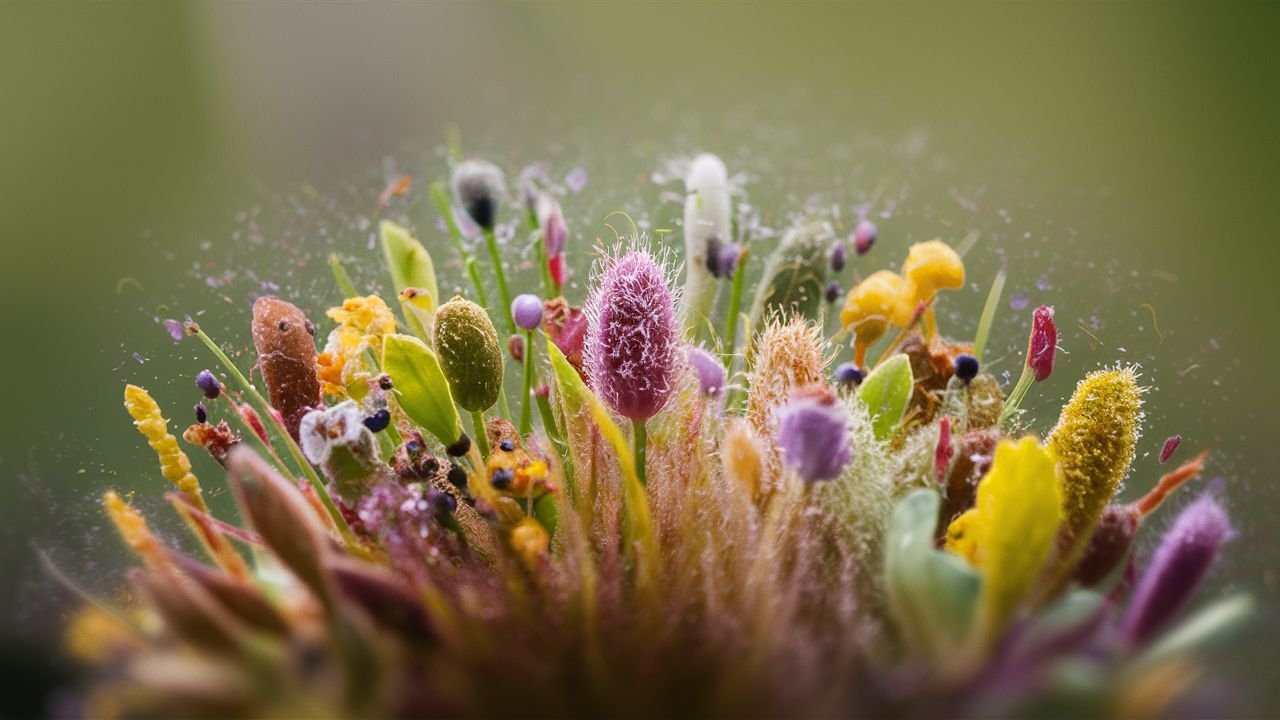
As we tackle the question: why are my allergies so bad in Hawaii? Pollen can be left out as it’s one of the primary allergy culprits in Hawaii. Due to the islands’ diverse ecosystems and nearly continuous growing seasons, pollen from various sources is present year-round. Notable allergenic plants include:
- Kiawe (Prosopis pallida): Especially prevalent in the drier regions, kiawe trees produce significant amounts of pollen.
- Mango and Avocado Trees: Both are widespread in Hawaii and release pollen that can trigger allergic reactions during their blooming seasons.
- Grasses and Weeds: Bermuda grass, Johnson grass, and the invasive Guinea grass are common in Hawaii and are potent sources of pollen.
Other Common culprits include:
- Koa trees with their scarlet blooms.
- The vibrant red flowers of Ohia Lehua.
- The ubiquitous Kukui nut tree.
Grasses, ever-present across the islands, contribute to the airborne pollen party.
Mold and Fungi
The islands’ high humidity levels create ideal conditions for mold and fungi to thrive outdoors and indoors. These allergens can cause respiratory symptoms and are particularly challenging to manage due to their pervasive nature.
Mold and fungi in Hawaii represent a significant concern for allergy sufferers, largely due to the islands’ climatic conditions that favor their growth. These microscopic organisms thrive in warm, moist environments, making Hawaii’s natural humidity and frequent rainfall ideal for their proliferation. Here, we delve deeper into the dynamics of mold and fungi as allergens within the Hawaiian archipelago, exploring their habitats, the health implications of exposure, and strategies for mitigation.
The Pervasive Nature of Mold and Fungi in Hawaii
Hawaii’s lush landscapes, while picturesque, create a breeding ground for a wide variety of mold and fungi. These organisms are not limited to the outdoors; they can also be found indoors, infiltrating homes, schools, and workplaces, often in areas with poor ventilation or water damage. Basements, bathrooms, and kitchens are common indoor habitats for mold growth, where leaks or condensation provide the moisture needed for spores to flourish.
Health Implications of Mold and Fungal Exposure
Exposure to mold and fungal spores can trigger allergic reactions in sensitive individuals. These reactions range from mild to severe and can include symptoms such as sneezing, coughing, itchy eyes, and skin rashes. For those with asthma or other respiratory conditions, inhaling mold spores can exacerbate symptoms, leading to increased difficulty breathing or asthma attacks. Beyond immediate allergic reactions, long-term exposure to high levels of mold and fungi can contribute to the development of chronic respiratory conditions and potentially weaken the immune system’s ability to respond to other allergens.
Identifying and Mitigating Exposure Risks
Mitigating exposure to mold and fungi requires a proactive approach indoors and outdoors. Here are strategies to reduce the presence and impact of these allergens:
- Indoor Air Quality: To keep humidity levels low in moisture-prone areas, use dehumidifiers. Regular maintenance of HVAC systems and the use of HEPA filters can also help reduce indoor spore counts.
- Prompt Remediation: Address water leaks and areas of condensation as soon as they are identified to prevent mold growth. Materials affected by mold should be cleaned properly or removed and replaced if the infestation is severe.
- Outdoor Awareness: While avoiding outdoor molds is more challenging, staying informed about local mold spore counts and limiting time spent in heavily wooded areas or near decaying vegetation can reduce exposure.
Emphasizing Prevention
Preventing mold and fungal growth is key to minimizing allergy risks. Regular cleaning, especially in areas prone to dampness, and ensuring adequate ventilation throughout living and working spaces can significantly deter mold proliferation. Considering materials and designs that reduce moisture accumulation can provide long-term benefits for those constructing or renovating homes in Hawaii.
Why Are My Allergies So Bad in Hawaii? Invasive Species
Invasive plant species could also be the reason why your allergies are so bad in Hawaii. These plants, introduced intentionally or accidentally, have thrived in Hawaii’s ecosystems. Many of these plants have become significant allergen sources due to their aggressive growth and high pollen production.
Invasive species are plants, animals, or other organisms introduced to an area where they are not native. They often thrive and outcompete indigenous species for resources. In Hawaii, the lack of natural predators for these invaders has allowed them to spread unchecked, significantly altering habitats and biodiversity. From an allergenic perspective, many invasive plants are prolific pollen producers, directly contributing to the increased incidence and severity of allergy symptoms among susceptible populations.
Notable Invasive Allergens in Hawaii
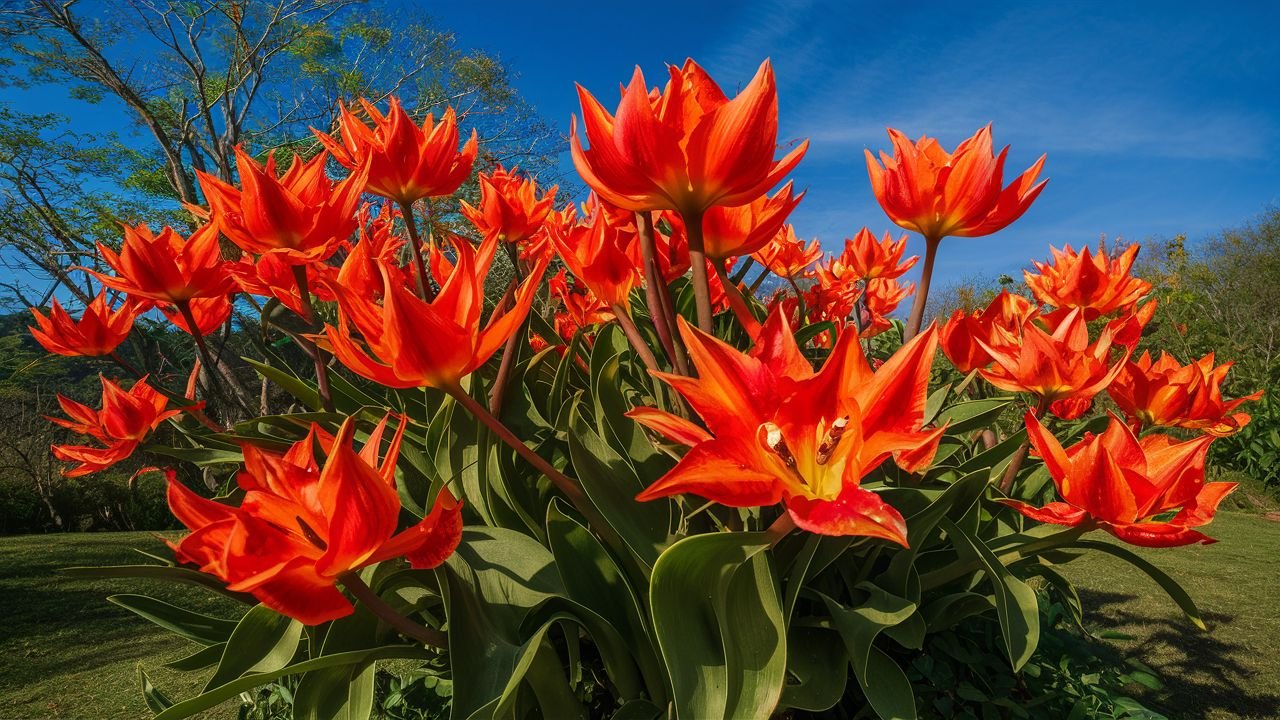
- African Tulip Tree (Spathodea campanulata): Known for its striking orange flowers, the African tulip tree has become widespread in Hawaii. It releases large quantities of pollen, which can be particularly bothersome for individuals with respiratory allergies.
- Christmasberry (Schinus terebinthifolia): Introduced for erosion control and ornamental purposes, Christmasberry’s pollen is now a common allergen that contributes to seasonal allergy flare-ups.
- Guinea Grass (Megathyrsus maximus): This tall, fast-growing grass has invaded agricultural and natural areas, producing copious amounts of pollen that affect air quality and respiratory health.
Adaptation and Spread
The success of these invasive species in Hawaii is partly due to their ability to adapt to the islands’ varied microclimates and their aggressive growth habits. Many invasive plants can quickly colonize new areas, especially those disturbed by human activity or natural events, further spreading their allergenic pollen.
Managing Allergic Reactions to Invasive Species
Understanding which plants contribute to allergy symptoms can help manage exposure for individuals living in or visiting Hawaii. Here are some strategies:
- Stay Informed: Learning to identify invasive plants and tracking pollen counts can help individuals anticipate and mitigate allergy symptoms.
- Landscape Choices: For homeowners, choosing native or low-allergen plants for landscaping can reduce the number of allergens around the home.
- Personal Protection: Wearing masks during high pollen seasons and using air purifiers indoors can help reduce exposure to invasive plant allergens.
Climate Change and Allergies
The effects of climate change are felt worldwide, and Hawaii is no exception. Rising temperatures and altered precipitation patterns have direct impacts on the severity and duration of allergy seasons, regardless of the type of allergen source, including pollen and metal allergies. Metal allergies are also more prevalent in a hot and humid environment, which is a known feature of Hawaii’s weather.
- Extended Growing Seasons: Warmer temperatures can lead to longer blooming periods for many plants, resulting in prolonged exposure to pollen.
- Increased Allergen Production: Studies suggest that higher carbon dioxide levels in the atmosphere, a driver of climate change, can boost pollen production in certain plants, further aggravating allergy symptoms.
It’s important to note that high humidity levels in Hawaii act like an accomplice, trapping these allergens in the air and making escape nearly impossible. What’s worse, the initial watery response from irritated eyes due to allergies can be misleading. The humid air can create a false sense of relief, only for the tears to evaporate quickly, leaving your eyes drier and more irritated in the long run.
VOG (Volcanic Smog)
Volcanic smog, or VOG, is a form of air pollution unique to volcanic regions like Hawaii. It is composed of gas and aerosol particles emitted by active volcanoes, including sulfur dioxide (SO2) and fine particulate matter. VOG can irritate the respiratory system, compounding the effects of traditional allergens and significantly affecting those with pre-existing respiratory conditions or allergies.
What is VOG?
The role of volcanic smog, or VOG, in exacerbating Hawaii’s allergies and respiratory conditions is significant and complex. VOG results from the emissions of active volcanoes, primarily Kilauea, which release large quantities of sulfur dioxide (SO2) and other gases into the atmosphere. These gases react with oxygen, moisture, and sunlight to form a hazardous mixture of fine particulate matter and acidic aerosols, impacting air quality and health across the islands. Understanding VOG’s composition, its health impacts, and strategies for mitigating exposure is crucial for those living in or visiting Hawaii.
Composition and Characteristics of VOG
VOG is comprised of a variety of components, including:
- Sulfur Dioxide (SO2) is a toxic gas released directly from volcanic vents. It can irritate the skin and mucous membranes of the eyes, nose, and throat.
- Particulate Matter (PM): Fine particles formed from the chemical reaction of volcanic gases with elements in the atmosphere. PM can penetrate the lungs, causing irritation and exacerbating pre-existing respiratory conditions.
- Acid Aerosols: These microscopic droplets form when volcanic gases react with water vapor in the air, leading to acidic compounds that can further irritate respiratory tissues and damage vegetation.
Health Impacts of VOG on Individuals
The health effects of VOG exposure vary depending on concentration levels, wind conditions, and individual sensitivity. Common health issues associated with VOG include:
- Respiratory Problems: Increased coughing, phlegm, throat irritation, and acute exacerbation of asthma and chronic lung diseases.
- Eye Irritation: The acidic nature of VOG can cause burning sensations, redness, and discomfort in the eyes.
- Skin Reactions: Sensitive individuals may experience skin irritation or rashes upon exposure to high levels of VOG.
Mitigating Exposure to VOG
Taking proactive measures to minimize exposure is essential for those residing in or visiting areas affected by VOG. Key strategies include:
- Monitoring Air Quality: Pay attention to air quality reports and VOG advisories. The Hawaii Department of Health and other local agencies provide updates on VOG conditions and safety recommendations.
- Staying Indoors: During periods of high VOG concentration, remain indoors as much as possible, especially if you have pre-existing respiratory conditions. Ensure that indoor spaces are well-ventilated, and consider using air purifiers equipped with HEPA filters to remove particulate matter.
- Protective Measures: When outdoor exposure to VOG is unavoidable, wearing N95 masks can help filter out harmful particles. Individuals with respiratory conditions should always carry their medications, such as inhalers, when VOG levels are elevated.
Allergy Season in Hawaii – Tips
Allergy season in Hawaii is somewhat unique compared to many other regions because of the state’s tropical climate, which allows for year-round exposure to various allergens. Unlike places with distinct seasonal changes, Hawaii’s consistent warm temperatures mean that plants can bloom and produce pollen throughout the year, leading to perennial allergy concerns for residents and visitors. However, certain times of the year may see spikes in specific allergens due to the blooming patterns of invasive and native plants, as well as other environmental factors. Here’s a breakdown:
Spring (February to May)

- Pollen Season: This is a peak time for tree pollen, with species such as the Acacia (koa), Mango, and Eucalyptus releasing pollen. Individuals sensitive to tree pollen may experience heightened allergy symptoms during these months.
Summer (June to August)
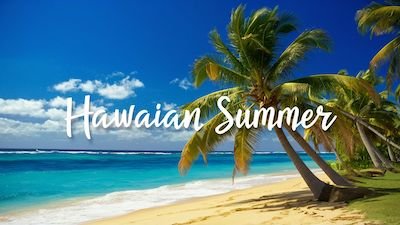
- Mold Season: The increase in humidity during the summer months can lead to a rise in mold and fungi growth, both indoors and outdoors. Mold spores are potent allergens and can trigger reactions in susceptible individuals.
- Additionally, grass pollens, particularly from Bermuda grass and Buffalo grass, can also peak during the summer months, contributing to allergic rhinitis symptoms.
Fall (September to November)
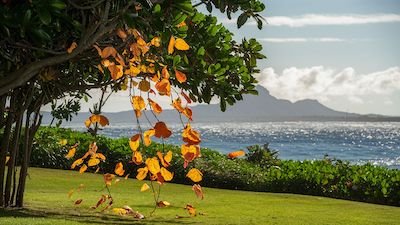
- Ragweed Season: Although ragweed and other weed pollens are less common during allergy season in Hawaii than in continental North America, they can still be present and contribute to allergy symptoms.
- The end of summer and early fall can also see continued high levels of mold spores, particularly following the wetter conditions of the summer months.
Winter (December to February)
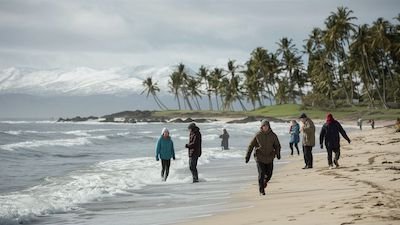
- Dust Mite Season: With Hawaii’s warm climate, dust mites remain active year-round but may become more concentrated indoors during the cooler months as people keep windows closed and spend more time inside. This can lead to increased exposure to dust mite allergens, causing symptoms for those with sensitivities.
- VOG (Volcanic Smog): While not a traditional allergen, VOG can exacerbate respiratory conditions and mimic or worsen allergy symptoms, particularly on the Big Island where volcanic activity is more prevalent.
Year-Round Considerations
- Hawaii’s unique environment also supports a wide variety of flowering plants and trees that can produce pollen year-round, contributing to ongoing allergic reactions making Hawaii allergy season an all-seasons.
- The presence of invasive species that bloom at various times throughout the year can also unpredictably impact allergy sufferers.
Regional Allergy Variations Across Hawaii
Despite common perceptions, Hawaii is not free from allergies; the types and severity of allergens vary significantly across the islands. Each region possesses its own allergy landscape:
- Oahu: Mild allergy seasons with predominant allergens being grass, tree, and weed pollen. Peaks occur in spring and fall.
- Maui: A broader range of allergens including pollen, mold, dust mites, and cockroaches, with notable allergy seasons in spring and fall.
- Big Island: A diverse climate leads to a mix of pollen, mold, and volcanic emissions as allergens, with drier months seeing more activity.
- Kauai: Known for its vegetation and rainfall, mold spores are prevalent, creating a year-round allergy season with wetter months seeing higher activity.
- Lanai and Molokai: These islands face spring and fall allergy peaks, primarily due to pollen, mold spores, and dust mites.
Managing Allergies in Hawaii
For those living in or visiting Hawaii, managing allergies involves a combination of avoidance, medication, and lifestyle adjustments.
- Avoidance: Staying indoors with air conditioning during high pollen counts or VOG conditions can reduce exposure.
- Medication: Over-the-counter or prescription allergy medications can help manage symptoms. Consultation with a healthcare provider is recommended for personalized treatment plans.
- Lifestyle Adjustments: Using air purifiers, maintaining clean indoor environments, and wearing protective masks during high-risk activities can mitigate allergen exposure.
Conclusion – Why Are My Allergies So Bad in Hawaii?
Allergies in Hawaii, influenced by the unique environment, diverse allergens, climate change, and volcanic activity, pose distinct challenges. However, with an understanding of the common allergens and effective management strategies, individuals can enjoy the beauty and biodiversity of Hawaii while minimizing the discomfort of allergies. Awareness and preparedness are key to navigating life in paradise for allergy sufferers. So, now do you know why your allergies are so bad in Hawaii?
FAQs: Understanding Allergies in Hawaii
1. Why do I have allergies in Hawaii? Allergies in Hawaii can be attributed to the islands’ diverse ecosystems and microclimates, which support a wide range of flora. This biodiversity, while beautiful, means exposure to a variety of pollen from both native and invasive plant species, mold due to the high humidity, and other unique factors like volcanic smog (VOG).
2. What are the common allergens in Hawaii? Common allergens include pollen from trees such as koa, ohia, and kiawe, grasses, and weeds. Mold spores thrive due to the islands’ humidity, and VOG from volcanic activity can also exacerbate respiratory issues and mimic allergy symptoms.
3. When is allergy season in Hawaii? Allergy season in Hawaii can occur year-round due to its warm climate. However, specific allergens peak at different times: tree pollen in the spring, mold in the summer, ragweed in the fall, and dust mites potentially becoming more problematic in the winter months.
4. How does VOG affect allergies? VOG contains sulfur dioxide and fine particulate matter that can irritate the respiratory system, worsening existing respiratory conditions and allergy symptoms. People with asthma or severe allergies may find their conditions exacerbated during periods of high VOG activity.
5. How can I manage my allergies in Hawaii? Managing allergies in Hawaii involves minimizing exposure to known allergens, using air purifiers, keeping indoor humidity low to deter mold growth, and staying indoors during high pollen counts or VOG alerts. Medications, including antihistamines and nasal corticosteroids, can help manage symptoms. Consulting with a healthcare provider for a tailored allergy management plan is also recommended.
6. Are there specific plants in Hawaii that cause more severe allergies? Invasive species like the African tulip tree and Christmasberry have become significant sources of allergens. Their high pollen production can contribute to more severe allergy symptoms among sensitive individuals.
7. What steps can I take to reduce mold exposure in my home? To reduce mold exposure, use dehumidifiers to keep indoor humidity levels low, fix leaks and damp areas promptly, and clean mold-prone areas regularly. Ensuring good ventilation in bathrooms, kitchens, and other moisture-prone areas is also crucial.
8. Can the climate in Hawaii affect my allergies? Yes, Hawaii’s climate can impact allergies. The consistent warmth and humidity support year-round pollen production and mold growth, contributing to ongoing allergy symptoms for many people.

